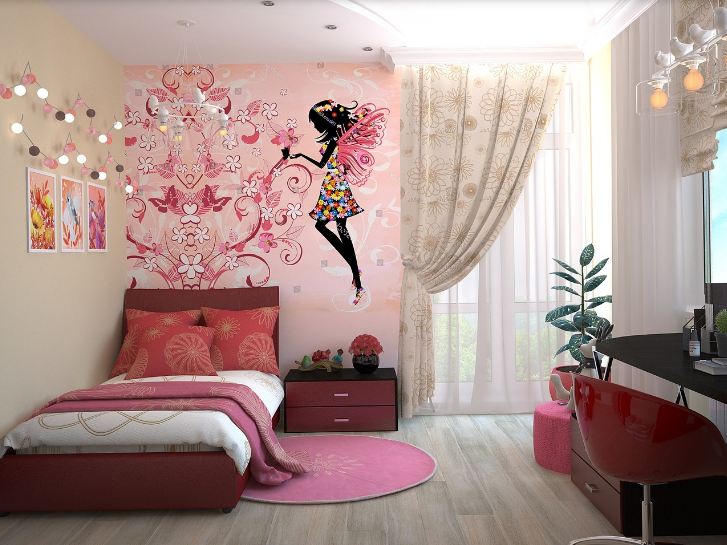Giving your child the freedom to decorate and decide on the design of their bedroom is an effective way to make them feel comfortable in their space. Leading child psychologists believe that parents must give their children a chance to decorate their own rooms as it lets the child express their personalities while you can show that you trust them in their decision making.
Here are some tips on how to let your child decorate their own room and how to stay out of your way:
1. Allow them to make choices while also putting your foot down
Allowing your child to make decorating decisions for his or her own room helps the kid feel the space they have is theirs. It helps develop the child’s self-esteem, as it’s a great way of saying, “I respect your decisions.”
But that doesn’t mean you can’t supervise. Different families have different values and rules. The differences in social, economic, and religious factors can affect family values in various ways. It’s essential to make your feelings known to your child before the decorating process begins. You have the right to shut down an idea if it’s something outrageous and highly impractical. But make sure you’re doing it for your child and not for you.
Give your children ample time to consider their choices before they are put into effect, especially if it’s about color schemes or wallpaper. Let them realize that it’s an important decision that they have to stick with. It will help them understand the importance of their decisions by standing by it, building good character with your child when making important decisions in the future.
Bringing your kids into the decision-making process can begin when the child is as young as three or four. You may start with small things like a lamp or a wastebasket and let your child go with you as you choose something to buy from the store. See what they would like.
2. Be on the lookout for what is age-appropriate for your child
Letting your child decorate his or her bedroom gives you a closer look at their interests and behavior.
These are traditional, general age-appropriate themes:
- Girls 6-8 – dolls and house sets
- Boys 6-8 – teddy bears and toy soldiers
- Girls 9-12 – dolls and makeup
- Boys 9-12 – cars and model airplanes
- Girls 13-15 – changes in color patterns, posters of their idols
- Boys 13-15 – sporting objects, board games, items featuring their favorite games
Everything your child does in relation to their environment is connected to what is happening in his or her psyche. For instance, a young child aged 5 to 7 who visits the zoo may come home and prefer posters of animals – perhaps even giving a name to them and talking to them. But if an 11 to 13-year-old had the same reaction and gave significance to what the animals represented, then you would be more concerned.
The older the child becomes, the more leeway you can give. In one room, there can be variation. As a parent, you must not worry about trends and fading fads unless the child becomes obsessive about it. You might get concerned if he or she chooses a poster of Hitler or some other figure or personality who is totally repugnant. In the same way, children who prefer their rooms decorated with dark, horrific objects and dark colors may be going through problems like depression.
3. Let your child get creative
Allowing your child to have decorating choices of their own can be a surprisingly effective way to depict his or her character. A child is full of creativity and big ideas and giving them leeway to decorate his or her room offers an early avenue to test out his or her preferences and taste. Don’t worry if it’s an assortment of random ideas and if it doesn’t fit one theme – remember it’s your child’s haven and not yours. But under your supervision, you can come up with helpful solutions that can easily accommodate future changes in a minimal way as your child grows older. Their ideas may seem conflicted today, but some sort of cohesion can be visible as time progresses.
4. Catch bad influence early
It is vital to give your children the freedom to choose what to put in their rooms, but in the same way, it can help you catch bad influences. Letting your child decorate his or her room can allow you to see if he or she is making bad decisions. If your child pulls down a Taylor Swift poster and puts up one with a famous serial killer or a notorious artist, this is a huge red flag. Big or little changes in your children’s room can be an indication of the changes they are going through. Whether the changes you see are positive or negative, it becomes an advantage to you as a parent since children can be very secretive as they grow older.
While giving your child the freedom to mold his or her character and personality, steer him or her in the proper direction.

